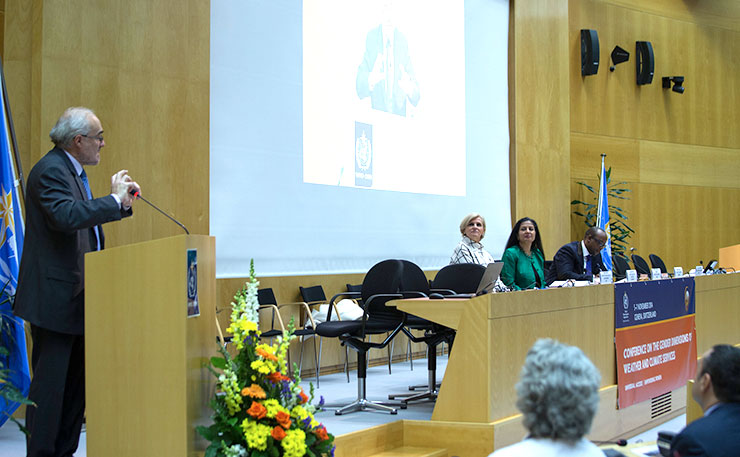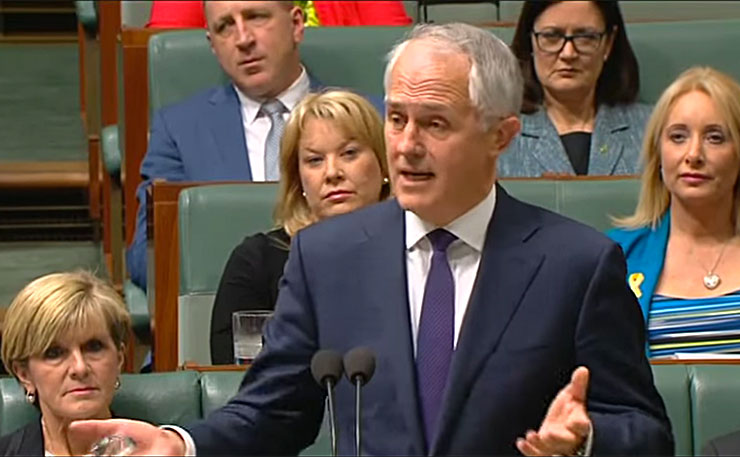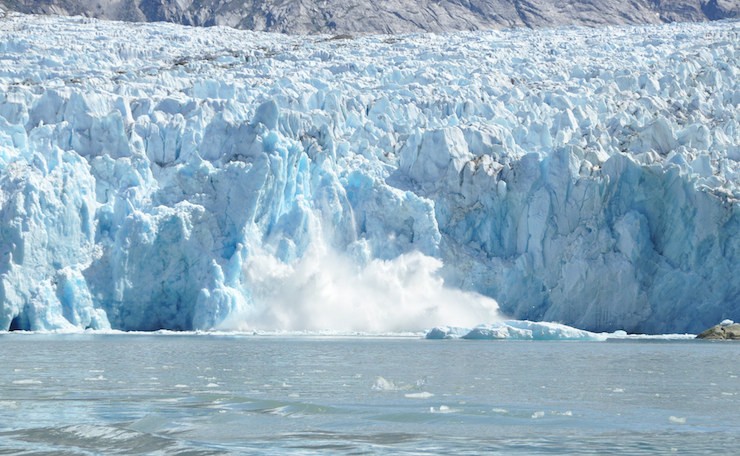The commitments nations have made ahead of the Paris climate talks already have the world on track to face ‘dangerous’ climate change, but the United Nation’s latest findings give further cause for alarm. Thom Mitchell reports.
The World Meteorological Organisation has released an alarming Annual Greenhouse Gas Bulletin ahead of historic climate talks in Paris this December, with the Secretary-General of the specialised United Nations agency warning “we are moving into uncharted territory at a frightening speed”.
“Every year we report a new record in greenhouse gas concentrations, and every year we say that time is running out,” said WMO Secretary-General Michel Jarraud. “We have to act NOW to slash greenhouse gas emissions if we are to have a chance to keep the increase in temperatures to manageable levels.”
Scientific consensus holds that 350ppm (parts per million) is the highest concentration of carbon dioxide in the atmosphere that could be considered ‘safe’, but the WMO results show the ominous 400ppm barrier was breached in Spring this year.
According to the WMO, carbon dioxide levels in the atmosphere have increased by 143 per cent on what they were in 1750 – the ‘pre-industrial’ benchmark climate measurements are often taken against – when concentrations sat at 278ppm.
Yesterday, Jarraud warned: “We will soon be living with globally averaged CO2 levels above 400 parts per million as a permanent reality. We can’t see CO2. It is an invisible threat, but a very real one.”

“It means hotter global temperatures, more extreme weather events like heatwaves and floods, melting ice, rising sea levels and increased acidity of the oceans. This is happening now and we are moving into uncharted territory at a frightening speed.
“Excess energy trapped by CO2 and other greenhouse gases is heating up the Earth’s surface, which leads to increase in atmospheric water vapour, which in turn is generating/trapping even more heat.”
While water vapour is responsible for trapping most of the heat in Earth’s atmosphere, it’s gasses like carbon dioxide that are distorting and intensifying that process. But carbon dioxide is not the only greenhouse gas driving climate change, it’s just one in the class known as ‘long lived greenhouse gasses’.
They’re called a ‘long-lived greenhouse gas’ because they linger in the atmosphere and prevent radiation from escaping from the Earth’s atmosphere.
In simple terms, these gasses are to the earth what a blanket is to your body: The heat from your body can’t escape as easily through the fabric of a blanket, and the thicker the blanket the more your body heat will be reflected back onto you. In this analogy, the ‘thickness of the blanket’ is equivalent to the concentration of long-lived greenhouse gasses, and their role in increasing the amount of heat reflected back is known, in technical terms, as ‘radiative forcing’.
According to America’s National Oceanic and Atmospheric Administration (NOAA), radiative forcing by long-lived greenhouse gasses has increased by 36 per cent since 1990 alone. This morning the WMO Bulletin said that carbon dioxide has, in broad terms, been responsible for 65 per cent of radiative forcing by long-lasting greenhouse gasses, but that over the last decade it has been responsible for a greater proportion, at 83 per cent.
The WMO Bulletin also looked at the two other major long-lived greenhouse gasses, Methane and Nitrous Oxide, which it suggests have contributed 17 per cent and 6 per cent to radiative forcing respectively. According to the UN agency, since pre-industrial times the concentrations of Methane and Nitrous Oxide in the atmosphere have increased, respectively, by 254 and 121 per cent.
It’s difficult to say exactly how this concentration of long-lasting greenhouse gasses corresponds to any rise in average global temperatures, which have already climbed by around 1 degree Celsius, partly because much of the warming activity humans have already caused is still ‘in the pipeline’.
But of course, at the most basic level, it’s the precipitous rise in long lasting greenhouse gasses which has fuelled the alarm that will see 195 countries meet in Paris this December to thrash out a global climate treaty.
Just under two weeks ago Christiana Figures, the top diplomat driving the United Nation’s Paris negotiations, released a report analysing how effective the commitments nations have made will be at mitigating the impacts of climate change, in the lead up to the talks.
The benchmark for ‘success’ at Paris, set during previous negotiations in Copenhagen in 2009, is that the global community has agreed any increase in temperatures above two degrees Celsius would be ‘dangerous’.
On the basis of the commitments made by 146 countries covering 86 per cent of global greenhouse gasses, Figueres said we now have “the capability of limiting the forecast temperature rise to around 2.7 degrees Celsius by 2100”.
While that estimate errs, most probably, on the side of hope, Figueres concedes it’s “by no means enough”.

Australia’s contribution to the global effort — a commitment to reduce emissions by 26 per cent by 2030, based on 2005 levels of greenhouse gas pollution — represents an annualised rate of emissions reductions of -1.6 per cent.
That’s around 35 per cent less ambitious than comparable countries. In 2012 perhaps the world’s best known climate scientist, James Hansen, said that if we’d started in 2013, a rate of emissions reduction of six per cent a year would be needed “to restore planetary energy balance and stabilise [the]climate this century”.
Given that, Australia’s level of ambition will be small comfort to our Pacific Island neighbours, who have joined a host of African nations in calling for a climate treaty tilted at avoiding any temperature increase above 1.5 degrees Celsius.
With many of those nations facing catastrophic impacts even at this lower level of global warming, the findings of the WMO represent an additional cause for alarm, particularly given the speculative nature of projections around how increases in long-lasting greenhouse gasses will affect the climate system.
Commenting on the release of the WMO Bulletin, Jarraud noted that “carbon dioxide remains in the atmosphere for hundreds of years and in the ocean for even longer”. “Past, present and future emissions will have a cumulative impact on both global warming and ocean acidification,” he said.
Over the last 15-odd years, total global emissions of greenhouse gasses have risen by around 61 per cent. Negotiators involved in the United Nations conference in Paris have the unenviable task of reversing that trajectory because, as Jarraud put it, “the laws of physics are non-negotiable”.
Donate To New Matilda
New Matilda is a small, independent media outlet. We survive through reader contributions, and never losing a lawsuit. If you got something from this article, giving something back helps us to continue speaking truth to power. Every little bit counts.





